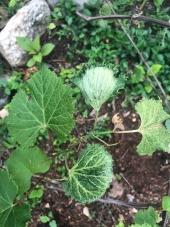









Idle dreamer


















Seed the Mind, Harvest Ideas.
http://farmwhisperer.com





Sustainable Plantations and Agroforestry in Costa Rica




Leila Rich wrote:'
While Ludi's desert is really hot, it's also really dry, so wood won't decay very fast.
Idle dreamer




Pastured pork and beef on Vashon Island, WA.









 Seems like wood rots pretty fast in wet years. This drought is unusual for us, considered exceptional. "Normal" rainfall is 15 - 40 inches.
Seems like wood rots pretty fast in wet years. This drought is unusual for us, considered exceptional. "Normal" rainfall is 15 - 40 inches.Idle dreamer
 1
1




Jack Spirko,
The Survival Podcast





Seed the Mind, Harvest Ideas.
http://farmwhisperer.com




Writing from Madhuvan, a yoga retreat/organic farm on the West Coast of Costa Rica.




Writing from Madhuvan, a yoga retreat/organic farm on the West Coast of Costa Rica.

|
mooooooo ..... tiny ad ....
Rocket Mass Heater Resources Wiki
https://permies.com/w/rmh-resources
|




